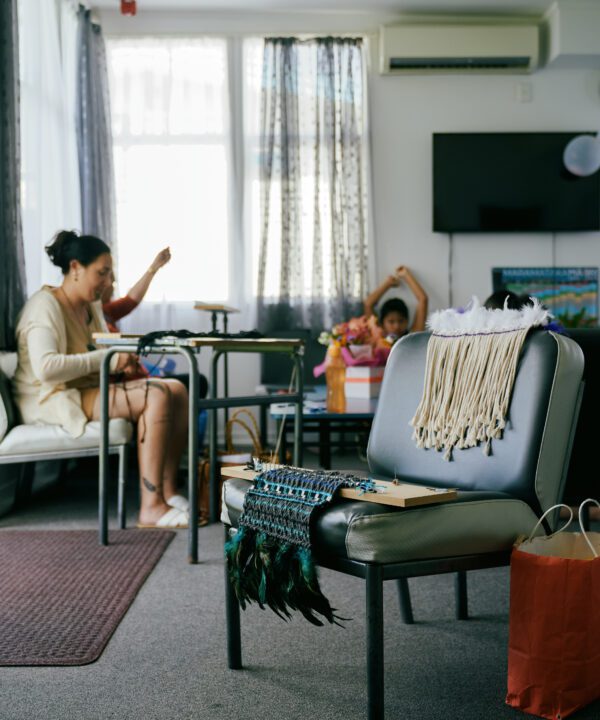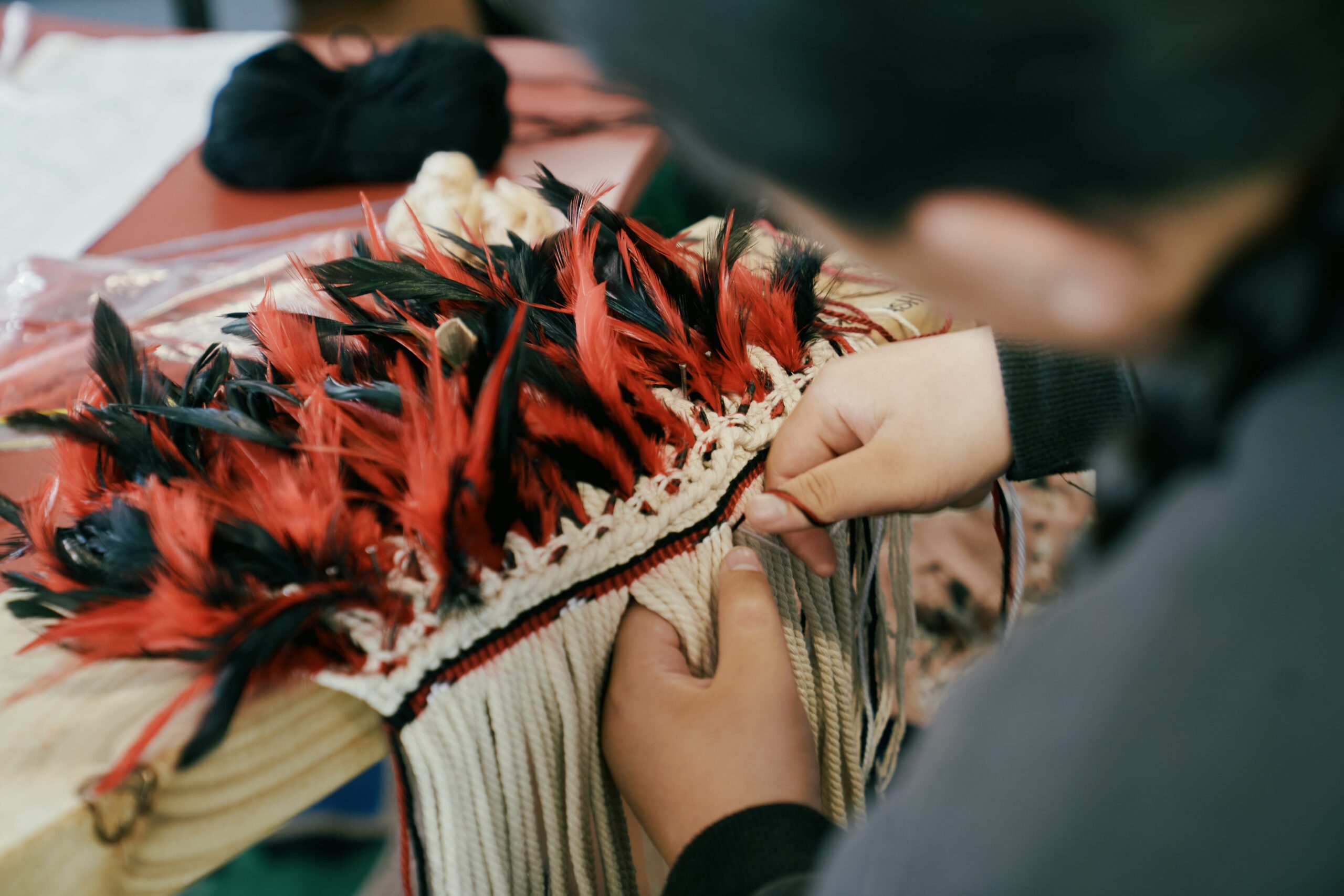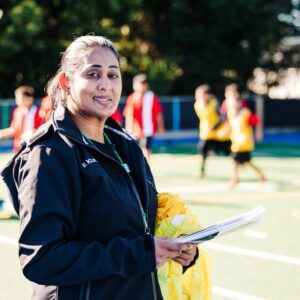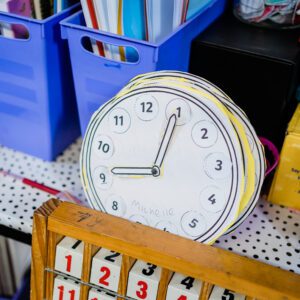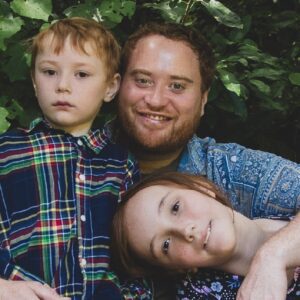By sharing the traditional skill of tāniko (finger weaving), which her mother had taught her, Whangārei kuia Tania Davis is inspiring pupils and teachers, strengthening their connections, and building engagement with further learning for struggling pupils.
Danelle Unuwai, principal at Te Kura o Otangarei, says learning tāniko has provoked more passion and excitement from her kaiako than any other form of professional learning and development (PLD) in the six years she has taught at the school.
“It’s professional learning because it fills their wairua up! We’re learning skills we can pass on to our tamariki, it’s good for the hauora, good for whanaungatanga. It actually meets many needs from this one activity.”
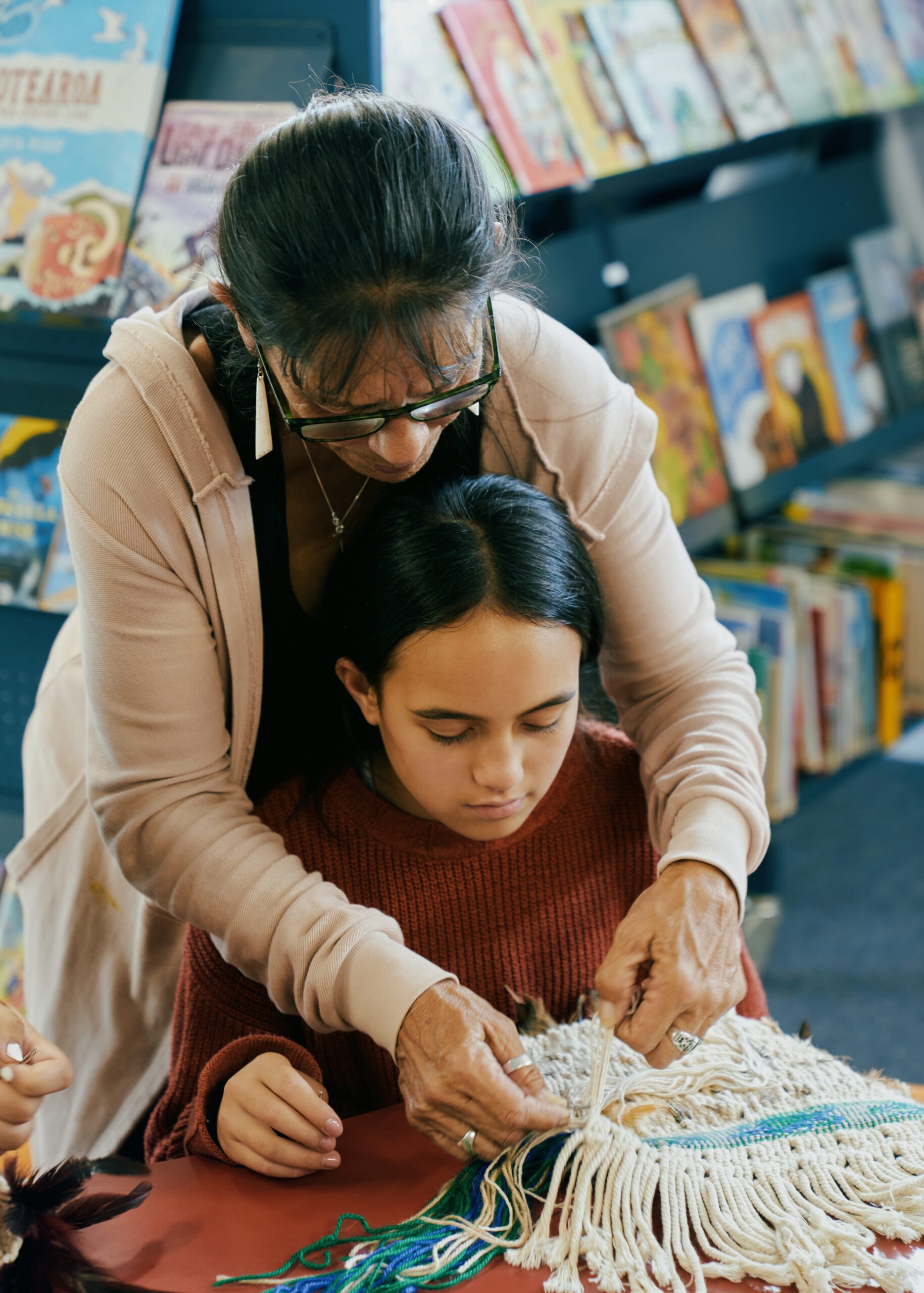

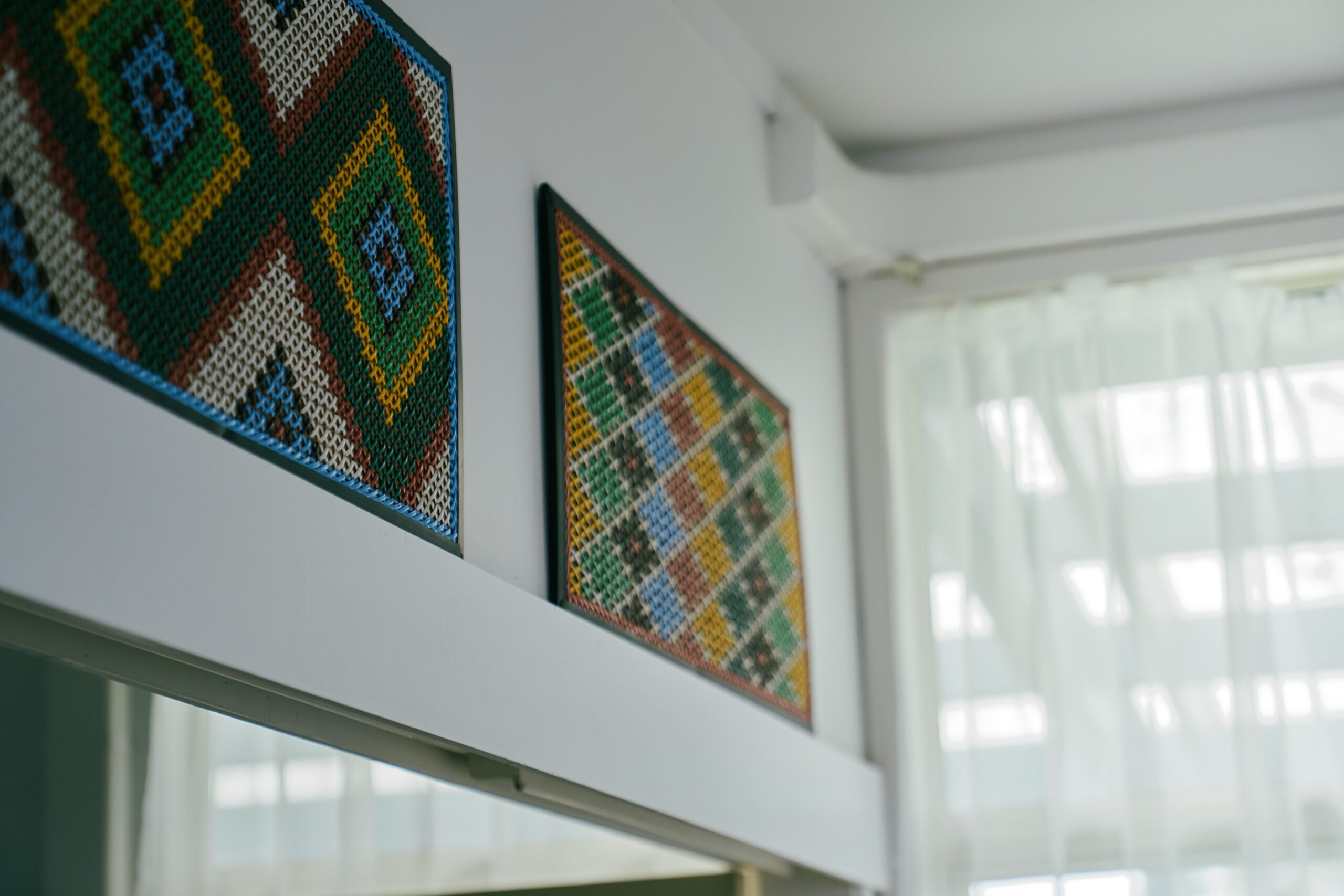

***
The programme began at Totara Grove School in 2022, after acting principal Vanessa Peters (Whaea Ness) admired Tania’s tāniko purse in the school carpark. Tania, a grandmother of a student at the school, acknowledged that she had made it herself. “The next question was, would you be interested in teaching a course here?” shares Whaea Ness. “I knew she was at home, and she had free time. And she said, ‘Oh gosh, I wouldn’t mind!’”
Tania wrote up a proposal that night, describing the benefits for the children, in alignment with the school values (whanaungatanga, manaakitanga, ako and tū rangatira). Whaea Ness was impressed and Tania was invited to return the next day. Whaea Ness told her, “I love it, I want to run with it, this is beautiful!” Whaea Ness selected a mixed group of girls – some she was concerned about educationally, and others who were rangatira or leaders at the school to provide a stabilising influence.
With the support of the school board, Whaea Ness drew on funding which had come to the school as payment for teachers doing a reo course, which she thought should be tagged for a kaupapa Māori project.
“So Tania started teaching the girls from 9am to 1pm every Wednesday,” explains Whaea Ness. “And it has been the best test of our school values, but also grit, persevering, resilience! We’ve had tears, we’ve had ‘I’m giving up, it’s too hard, I can’t do it!’ And then we talked about the puāwai, the blossoming at the end – ‘It’s going to take some hard work, but you wait!’ So it’s that mindset stuff for the girls too, the ones that struggled in class, with engagement, coaching them through that.
“Tania is great with them like that too, she’s ended up becoming a nana for these girls. There have been so many wins for everyone!”
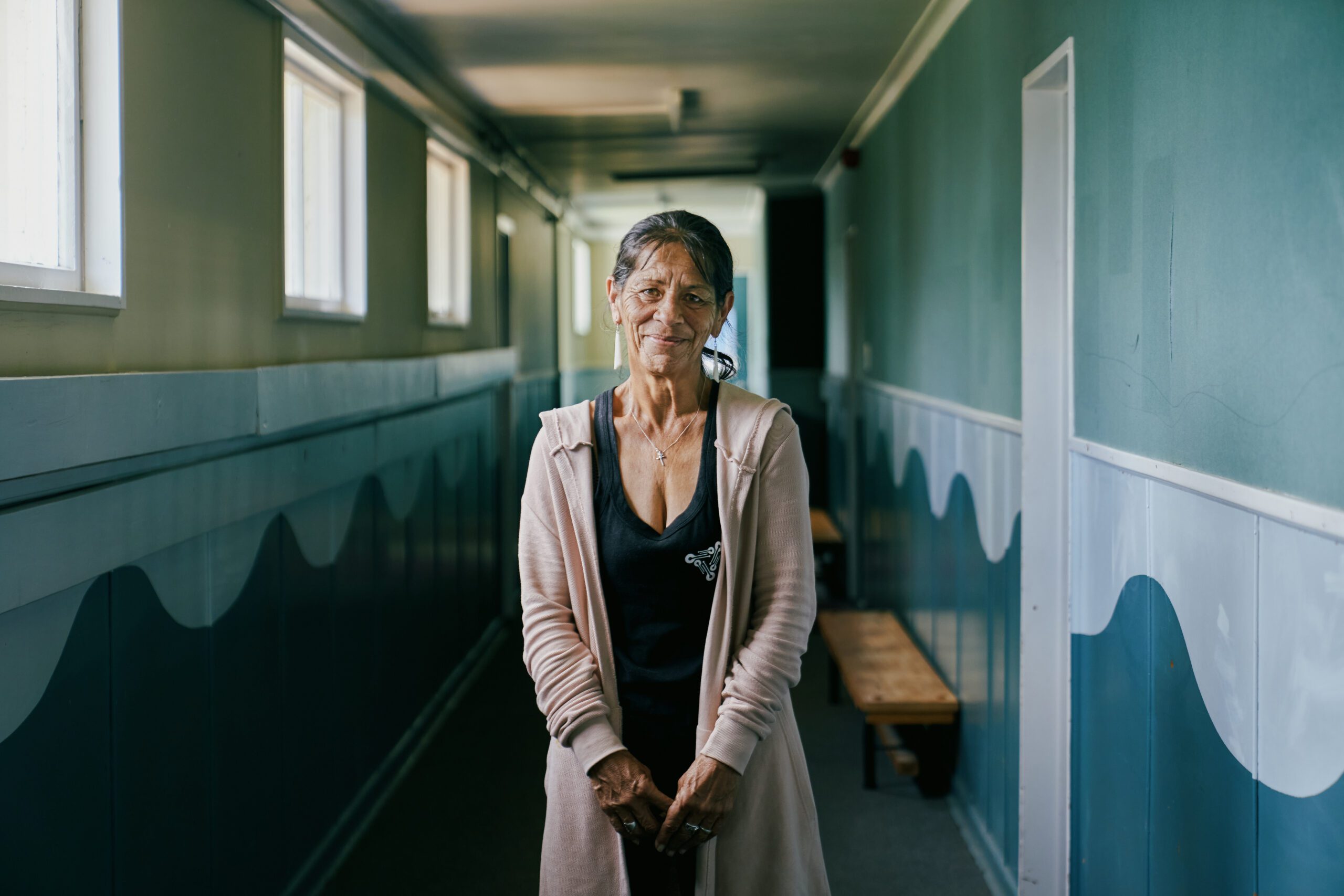
Then one of the kaiāwhina (teacher aides) saw the girls learning and asked if she could learn too. Whaea Ness suggested Tania might be willing to teach a group of staff after school once a week, and when she agreed, Whaea Ness asked the school board to fund Tania for that mahi as well. The board agreed.
“The way I see it is, teacher aides get the skill, then they can take it back to class,” explained Whaea Ness. “There are so many of our kids that need to learn this art form – fine motor skills and so on.”
Ten staff at the school, including one male, have been supported to learn tāniko with Tania – five classroom teachers, four kaiāwhina, and a relief teacher. “We’ve just finished our term, and oh my gosh, you should see their mahi toi!”
Because the students and teachers are all first-time learners of this challenging and rare skill, it has created a bonding experience for them all, and lifted morale and spirit. At the end of the term, they had some beautiful artworks which others could see and admire. For the teachers, learning tāniko helped them identify with new learners and understand their feelings.

“The way I see it is, teacher aides get the skill, then they can take it back to class. There are so many of our kids that need to learn this art form.”
“We could all relate to the struggle that they went through,” says Whaea Ness. “I said, ‘now I can see their tears!’ And we’ve had to ask each other, ‘Hey, how do I do this?’ It’s really humbling. When the girls finished their little kākahu (cloaks), we invited them to our adult evening class after school. We had kai, we celebrated, and they worked alongside us. It was beautiful to hear them say, ‘Whaea, you do it like this!’ And ‘Will you come and help me? How do I do this part?’
“And then the parents came in to see. Tania did up all these certificates and a taonga, and when we presented them with their kākahu, at end of term assembly, their whānau were with them.”
Mastering this traditional artform has been difficult, but it has touched students and teachers deeply. “When they had their last session, it was really emotional,” says Whaea Ness. “One group was just crying, ‘I don’t want it to finish!’ So we’ve kept them on, we’ve got a second group that have started this term.”
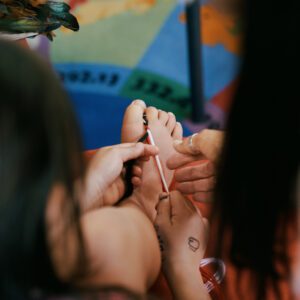

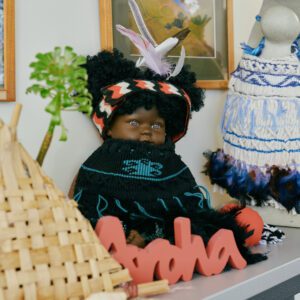
***
Whaea Ness was so positive about the effects of Tania’s tāniko teachings that she asked her if she might be willing to teach at another school as well. With her consent, Whaea Ness invited interest from the other four schools in the local I Have a Dream network. It was quickly picked up by neighbouring school, Te Kura o Otangarei.
“It’s been awesome, the journey we’ve been on,” shares tumuaki at Te Kura o Otangarei Danelle Unuwai. The kura has two full reo immersion classrooms and the rest are reo rua (bilingual). It has a 100 percent Māori student roll, with students mostly from northern iwi. “We started last term with a group of girls, like six Year 6 girls, and it has just been a great experience for them – all the skills that they’ve picked up through the group. Resilience has been the main one, and perseverance. You know when things get tricky, having to keep on trying.”
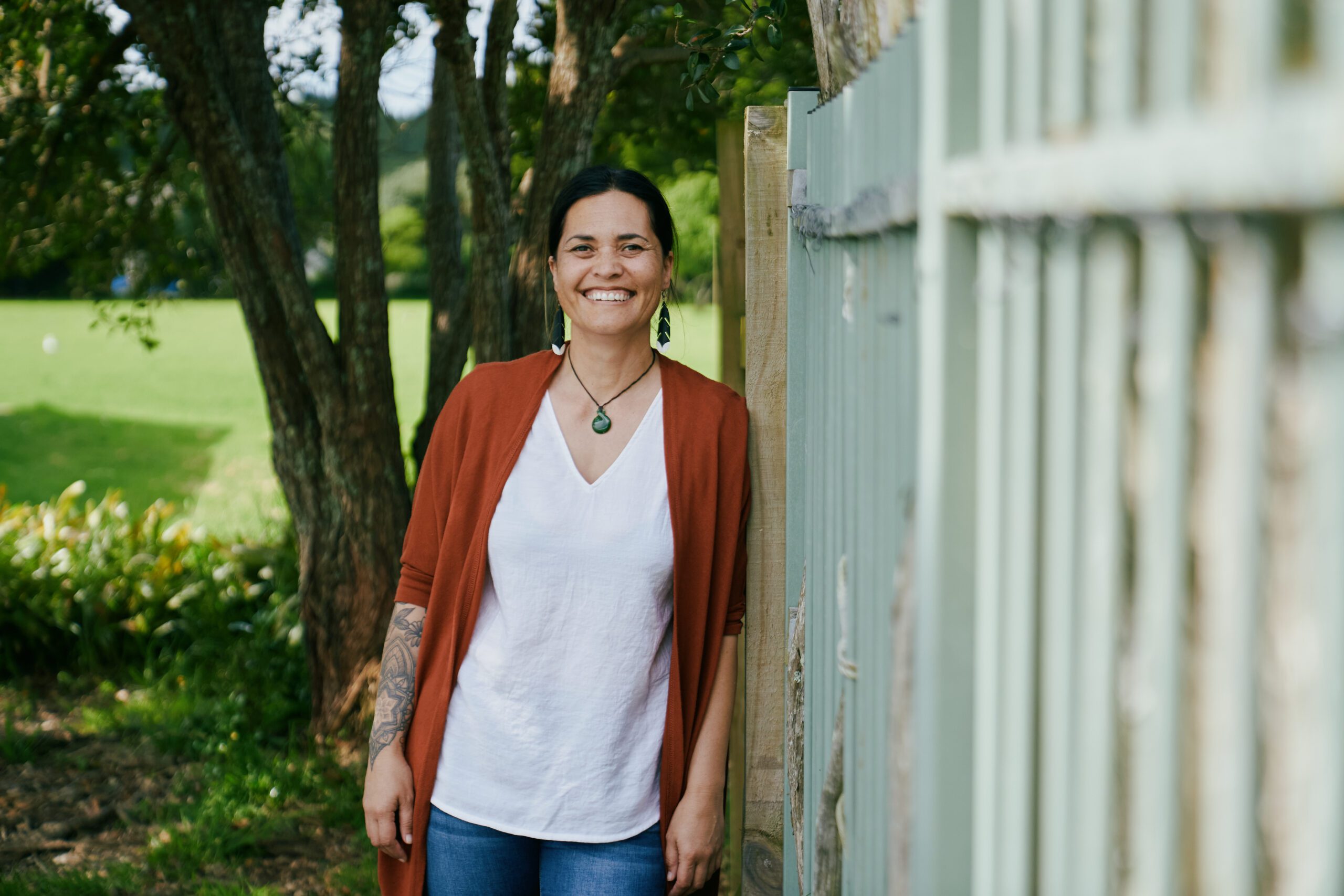
“We’re modelling ourselves as learners too, and they’re enjoying watching us.”
Whaea Danelle’s selection of girls was based on their interest in art, and having a positive attitude to trying new things. For some, she thought it would give them something positive to look forward to. At her kura, the programme was targeted at the older girls, Year 6, who could gain the skill, then pass it on to another group before leaving the school at the end of the following year.
“One of our girls that was in the kōtiro group, she taught us (teachers) how to do the tāniko! ‘You just spin this one and twist your finger.’ So we took a video of her showing the process. She’s the expert, she’s helping us! And it was good for our girls who found it challenging. We’re modelling ourselves as learners too, and they’re enjoying watching us.”
Whaea Danelle also heard that Tania was willing to teach staff as well, and found that most of the staff, in fact all the women, were interested in learning the skill. “So we’ve got a group of ten that meet every week.” Being situated next to a kindergarten, and wanting to build a stronger connection with those staff, Danelle also invited them to join the tāniko group, and two kindergarten staff have taken it up. “We wanted to build more whanaungatanga, so they’ve joined our rōpū and it’s really helped us to connect.”
Whaea Danelle sees the tāniko work as very effective professional development. “It’s something that’s challenging, even I’m doing it. I wanted to cry for the first two or three sessions ‘cause I couldn’t get it, even I had to learn to keep persevering. It’s been a real good journey that we’ve all been on.
“We’re learning something that is one of our old skills from the past, but it’s really good for our hauora. We just didn’t want to stop! Because we were just starting to grasp it, and we were all loving it. We even got together in the holidays at one of our homes and had a day wānanga.
“There are so many things to be learnt. Even for us as adults, learning the patterning and the maths and things. And trying to awhi other people along too. It’s just like a classroom situation, but we’re all adults.”
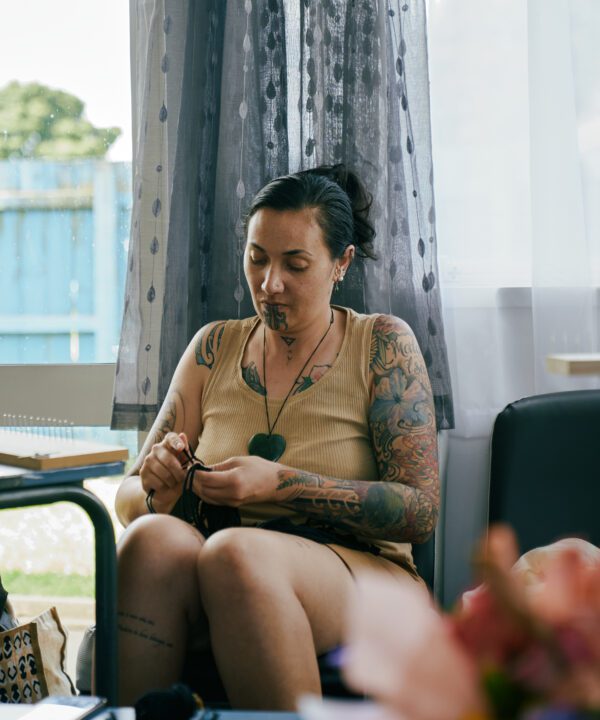
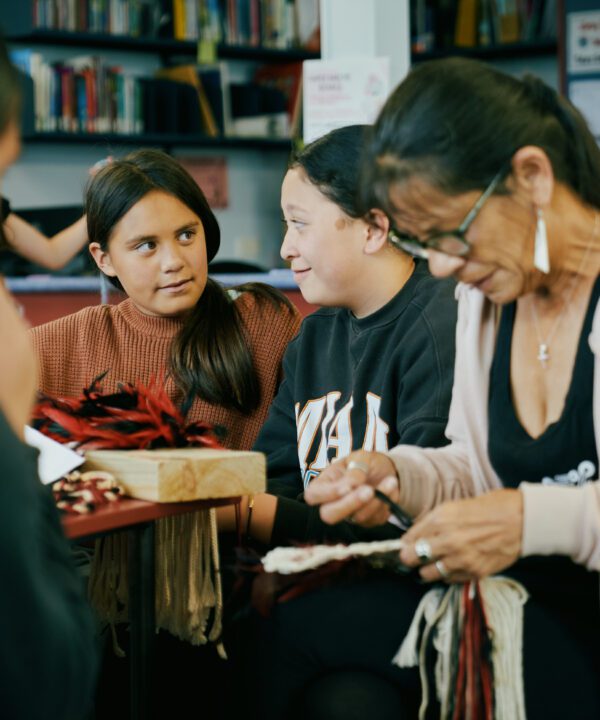
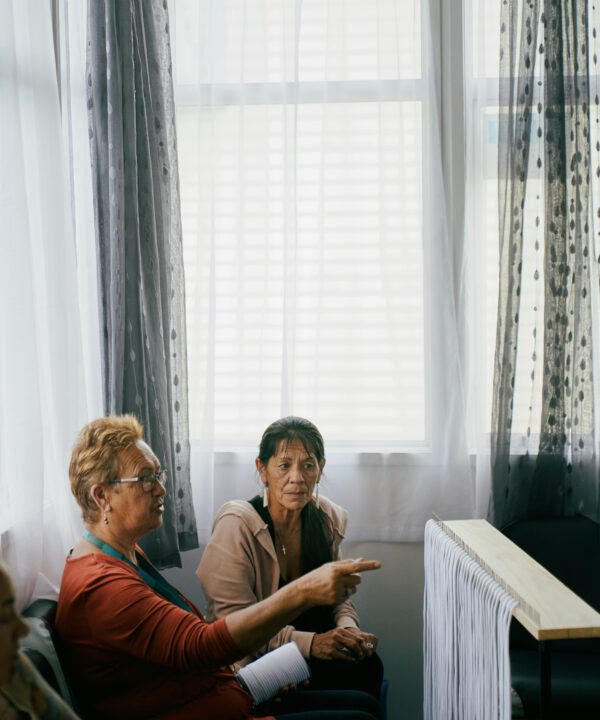

How does learning tāniko support better teacher practice? “Well for myself, and I was a teacher before I was the principal, it’s helped me know how learners feel. To be learning something, and how challenging that can be … it’s been good for us as kaiako who work with tamariki to know this is how our learners feel every day, and keeping that in mind.”
Whaea Danelle also says it has been good for mindfulness. “It teaches us too as adults, to slow down, chill out and get grounded.”
While the girls learn it in a 3-hour session during school hours, staff at Te Kura o Otangarei have a 2-hour session after school on Mondays. Even one of the school board members has joined the tāniko staff group. “That was great. I was like, oh yeah, that will help you connect more with the staff and build that whanaungatanga!”
“It teaches us too as adults, to slow down, chill out and get grounded.”
***
After taking a group of pupils and staff through to completion of their first small kākahu, and extending the programme to Otangarei, Tania is now preparing her students to make larger kākahu which represent the school mātāpono or values, to become significant art pieces for the school.
“So we’re advancing them in their weaving, but also their knowledge,” says Tania. “Their first kākahu was just do this, and follow the steps. Now I’m starting to teach them to weave that whakapapa into their kākahu and to think about creating the story in their kākahu.
“Each of them is given a value, and each is creating a kākahu to represent that. For example, for the ako value, one of the girls is doing her tāniko – simply a book, a ruler and a pencil. Just stepping them up, bringing in those values from the school. Teaching them about creating their story and their kākahu, and representing it. I’m really excited about that for them!”
Tania’s programme is built around the concept of ‘Poipoia kākano, kia puāwai’ (Nurture the seed and it will flourish). She uses contemporary materials to teach all the techniques required to weave any kākahu. Tāniko is but one part of that. Her students are also learning to weave māwhitiwhiti and add tags and feathers to complete their kākahu. While this is a new career for Tania, who had never taught tāniko previously, she is finding it deeply satisfying. “My mum was a beautiful weaver, she taught me when I was about ten, but when I was about 11 she joined the church with my dad and she really struggled to bring those two worlds, te ao Maori and te ao hāhi together. And she gave up weaving and followed her Christian life, and it wasn’t until she was much older that she wanted to re-start. But by then she wasn’t able to. So for me, it’s about picking up my mum’s journey. “What I love is seeing the change in other people’s lives. Absolutely, things have really done a turn-around for me, but it’s just so exciting to see passion and love, and relationships building. It has created so much more than just whatu (weaving). That surprised me. I’m loving every second of it, it’s wonderful!”

